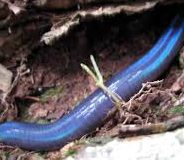Mass Migration of Blue Earthworms in Meghalaya
The Zoological Survey of India (ZSI) has prepared a report on two-way mass migration of the blue earthworms in the state of Meghalaya.
Key Facts
- The blue earthworms, measuring up to 1.6 feet in length, migrate up and down to 300 metres in the East Khasi Hills of the state.
- Uphill migration of the earthworms starts in April-May. With the onset of monsoon, they emerge from the rivers and streams.
- Downhill migration occurs during September-October when the vegetation starts to dry and temperature & humidity drop.
- The locals in the state beat them when they observe these earthworms because of they play a major role in enhancing the fertility of soil.
- Further, it helps in shifting the locals to ecologically sustainable organic farming.
Concerns
There are some areas in the state where the unsustainable land-use practices have drastically reduced the population of earthworms. The damage has been caused mostly by the stone quarry and heavy earth-cutting. The factors including the developmental activities, erratic weather patterns, predation, and climate change results into the mass migrations of earthworms.
Blue earthworm
The scientific name of the blue earthworm is Perionyx excavates. It is also called as composting worms, blues, or Indian blues. The species is known for its ability to create the fine worm castings so quick. The species have become popular in North America recently where it is used for composting purposes. Scientists believe that its origins are in the Himalayan mountains. It is also suited for vermicomposting in tropical and subtropical regions.
Month: Current Affairs - February, 2021


